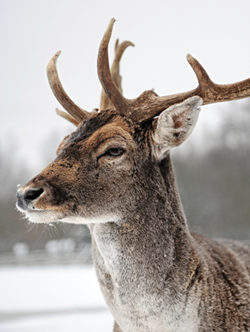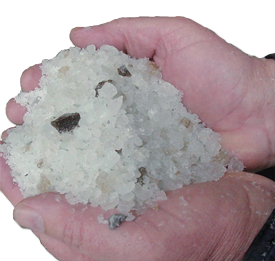Salt and Our Environment
Why salt
Winter salt is economical to purchase, readily available and an effective tool for keeping surfaces clear of ice. However it is important to manage its use to reduce the negative impact winter salt can have on our environment.
Salt damage costs us all. As individuals, it affects our clothes, shoes, animal friends, lawns, gardens, and vehicles. In our communities, it damages sidewalks, roads, buildings, and bridges and leads to increased maintenance costs.
Effects of winter salt
On our urban environment . . .
Buildings: outside structures (bricks/concrete/sidewalks), doorways and flooring may become damaged, increasing repair costs.
Vehicles (cars/trucks): salt accelerates rusting, causing damage and increasing repair costs.
Clothing: salt can stain and potentially ruin footwear and clothing.

On our natural environment . . .
Drinking water sources: damaging sodium and chloride from winter salt eventually makes its way to drinking water wells in some communities. High chloride levels may make drinking water taste salty.
Vegetation (plants/trees/shrubs): if sprayed with salt, vegetation can lose its hardiness to the cold and be killed by freezing temperatures and high salt levels.
Aquatic life: salt changes water density, which can negatively affect the seasonal mixing of lake waters. This mixing is important to increase oxygen levels required by aquatic life for survival.
Wildlife: attracted to salt on or by the road, which increases the threat of collisions with vehicles.
Pets: salt trapped on paws can irritate and crack skin.
Be smart about the salt you use
Visit Winter Tips section of this website for ways you can help!


